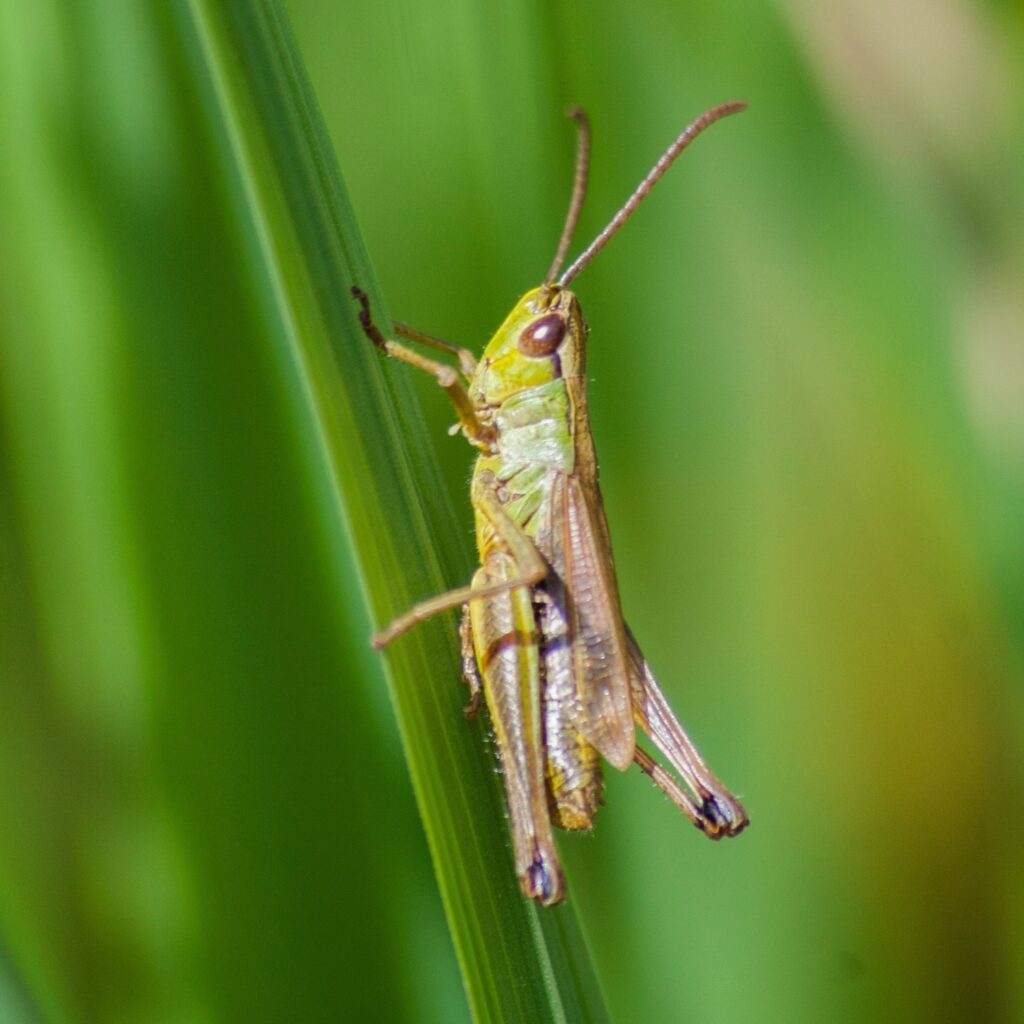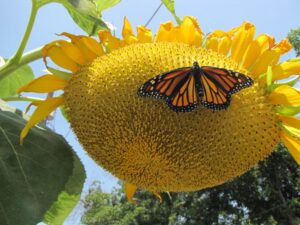Kathy Berryhill
Creek County Master Gardener
Most gardeners respect living things. We tenderly tend to our flowers, various vegetables, and turf grasses. We spend time researching and studying ways to work with nature and accept grudgingly all the conditions that are thrown in our direction. Serious droughts, ice storms, and pests of all kinds don’t seem to faze us as we start to plan for the “next season.” However, just let a grasshopper come into view and we turn into warriors! Any method to destroy this pest is used including stomping on them, cutting them in half, and trying to drown the ugly insect with a stream of water. Nothing is beyond our imagination to try and mitigate the damage left behind by this ever-hungry flying insect. Perhaps some facts about the life cycle of the grasshopper would provide insight into how to manage it in our gardens.


Oklahoma has a variety of forest and grassland landscapes and they provide a good home to over 130 species of grasshoppers. Thankfully, only a few of the species become pests. The differential grasshopper and the two-striped grasshopper are the two that do the most damage to our ornamental and vegetable plants. The two-striped grasshopper is identified by the two yellow stripes that form a v shape on its back while the differential species is mostly brown. Areas that are surrounded by pastures, weeds, and vegetation experience more of a problem with grasshoppers so a more rural community may see more damage than an urban landscape. Grasshopper damage is noticeable when round to ragged holes appear in leaves.
All grasshopper species share a similar life cycle which includes three stages of life: egg, nymph, and adult. Pods are laid in the soil during fall which contain 8-30 eggs. Grasshoppers prefer to lay in areas such as ditches, fencerows, weedy areas and fields with harvested crops. The eggs hatch the following spring and then go through 5 instars (shedding their outer layer) as they become adults. Most species only produce one generation of offspring. Various species will emerge from eggs at different times, providing an endless supply of insects. When they are small, grasshoppers will stay close and feed on grasses and broadleaf plants. They relish fresh grasses, tender vegetables and flowers. Once mature, a grasshopper can fly for miles in search of food. Since our gardens have an ample supply of moisture and varied food choices, they love to stay and sample this tasty buffet.
Once the damage is noticeable, the thought is to apply insecticides. While this will wipe out the existing pests, within days new grasshoppers will invade. This is due to the short life of insecticides that have been applied. To continue controlling the population an insecticide would have to be sprayed every 3-4 days. Therefore, if used at all, insecticides would be most effective if applied in June when the insect is young. Using insecticides can be counteractive in many ways. Most of the insecticides that are effective against grasshoppers are also lethal to bees – a natural enemy!
Steps for management without insecticide require time and effort. Hand picking and destroying is challenging, but can help. Using cover rows made of screen can protect a selected area. A border of tall grasses around a garden can be useful to entice the grasshopper to eat the grass, and stay away from the garden. Attract natural predators such as birds by maintaining birdhouses on your property. Grasshoppers provide a tasty source of protein for the birds. Even wasps will help with population control.
Applying a solution of Neem Oil helps to slow the activity of a grasshopper. Mix 2 quarts of warm water with ½ teaspoon of a mild liquid soap. Add 3 teaspoons of Neem Oil and stir to mix the ingredients. Spray plants with this mixture. Due to our heat, apply this mixture when the plant is not in direct sunlight. DIY traps can be made by cutting off the top few inches of a plastic bottle. Put some grasses in the bottle and replace the “inverted” top. Once the grasshopper crawls in, they won’t be able to escape. Other methods to try include spreading diatomaceous earth around your garden. The sharp edges of the DE will scrape the exoskeleton and lead to the grasshoppers’ demise.
If all else fails, add some chickens, guineas or turkeys to your yard! They love grasshoppers. But poultry also loves a good garden, so you will need to fence off this area.
Hopefully, a combination of the above suggestions will help!
Happy Gardening.










